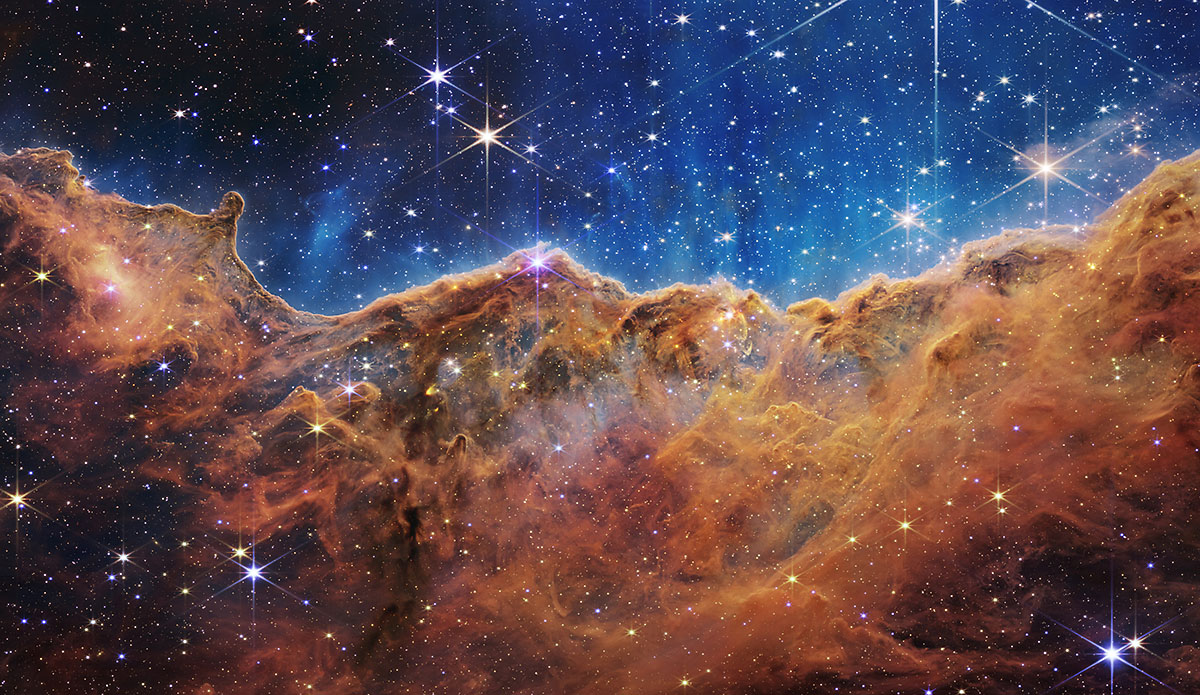One of the first images captured by the James Webb Space Telescope, this landscape of “mountains” and “valleys” speckled with glittering stars is actually the edge of a nearby young star-forming region called NGC 3324 in the Carina Nebula. (NASA, ESA, CSA, and STScI)
Home One of the first images captured by the James Webb Space Telescope, this landscape of “mountains” and “valleys” speckled with glittering stars is actually the edge of a nearby young star-forming region called NGC 3324 in the Carina Nebula. (NASA, ESA, CSA, and STScI) One of the first images captured by the James Webb Space Telescope, this landscape of “mountains” and “valleys” speckled with glittering stars is actually the edge of a nearby young star-forming region called NGC 3324 in the Carina Nebula. (NASA, ESA, CSA, and STScI)


